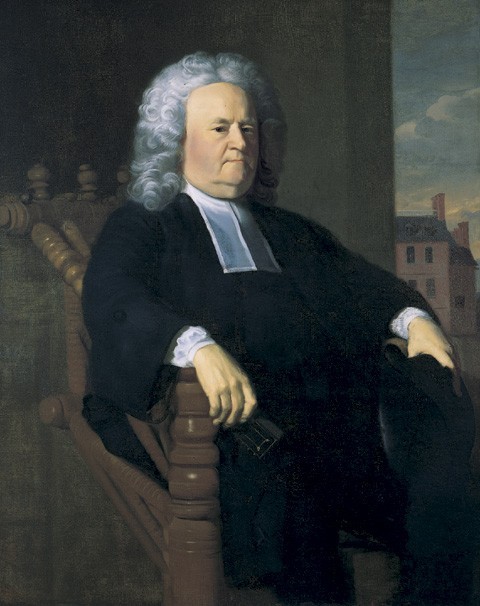
John Singleton Copley, Reverend Edward Holyoke, Boston, Massachusetts, 1759–1761. Oil on canvas. 50 1/2" x 40 1/2". (Courtesy, Harvard University Portrait Collection, Cambridge, Massachusetts, given to Harvard College by Mrs. Turner and Mrs. Ward, granddaughters of Edward Holyoke, 1829.)

John Singleton Copley, John Bours, Boston, Massachusetts, ca. 1761. Oil on canvas. 50 1/4" x 40 1/4". (Courtesy, Worcester Art Museum.)

Corner chair, Newport, Rhode Island, ca. 1765. Mahogany with maple and pine. H. 34", W. 30", D. 25". (Courtesy, Rhode Island School of Design.) www.risd.edu
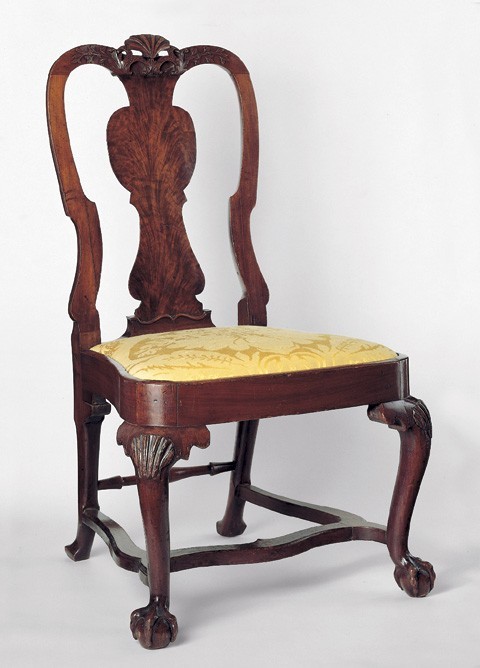
Side chair, Boston, Massachusetts, ca. 1740. Walnut and walnut veneer with maple and white pine. H. 38 5/8", W. 20 3/4", D. 18 1/2". (Chipstone Foundation; photo, Gavin Ashworth.)

John Singleton Copley, Eleazer Tyng, Boston, Massachusetts, 1772. Oil on canvas. 49 3/4" x 40 1/8". (Courtesy, National Gallery of Art, Washington, D.C., gift of the Avalon Foundation.)
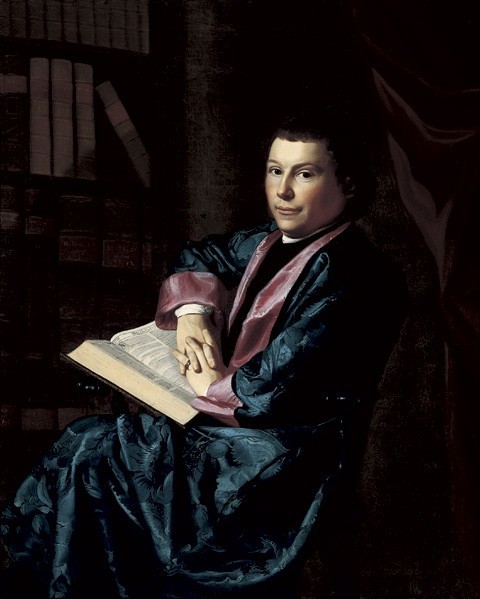
John Singleton Copley, Reverend Thomas Cary, Boston, Massachusetts, ca. 1770–1773. Oil on canvas. 50" x 40 1/4". (Courtesy, Museum of Fine Arts, Boston, gift of Mrs. Richard Cary Curtis.)
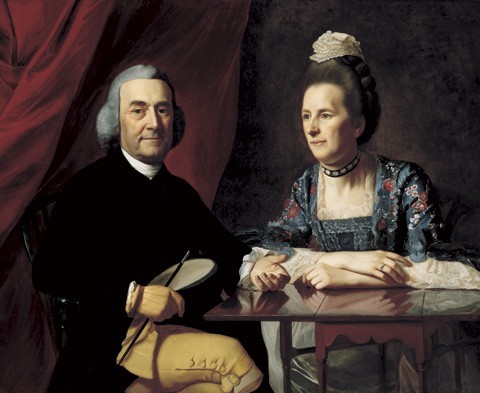
John Singleton Copley, Mr. and Mrs. Isaac Winslow (Jemima Debuke), Boston, Massachusetts, 1773. Oil on canvas. 40 1/2" x 48 3/4". (Courtesy, Museum of Fine Arts, Boston, gift of Mr. and Mrs. Maxim Karolik for the M. and M. Karolik Collection of Eighteenth-Century American Arts.)

Anonymous, Robert Reid’s Studio, ca. 1890. Photographic copy print. (Courtesy, Archives of American Art, Smithsonian Institution.)
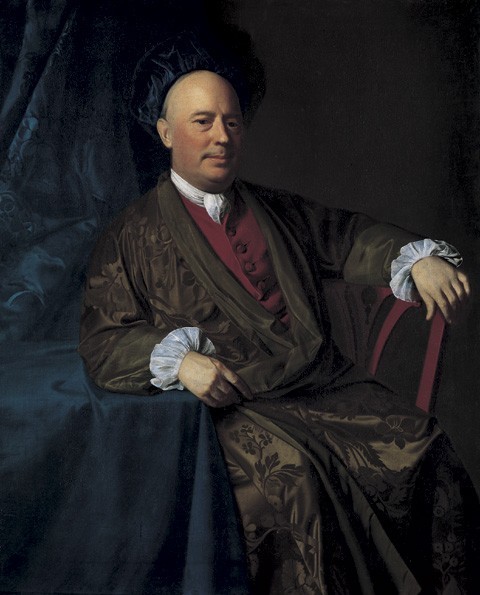
John Singleton Copley, Joseph Sherburne, Boston, Massachusetts, ca. 1767. Oil on canvas. 50" x 40". (Courtesy, The Metropolitan Museum of Art, Amelia B. Lazarus Fund, 1923 (23.143) Photograph © 1991 The Metropolitan Museum of Art)
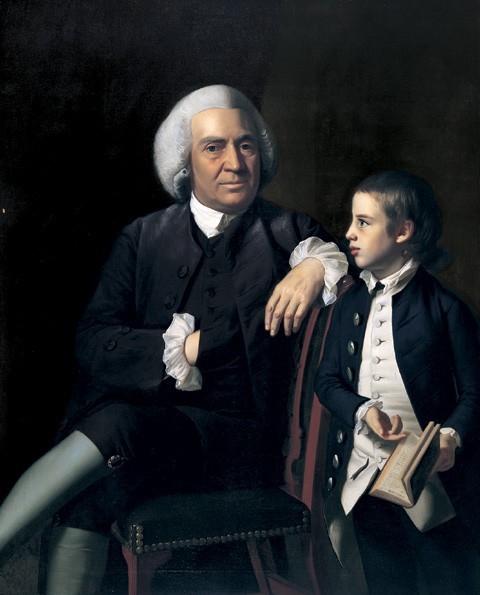
John Singleton Copley, William Vassall and His Son Leonard, Boston, Massachusetts, ca. 1770–1772. Oil on canvas. 49 7/8" x 40 7/8". (Courtesy, Fine Arts Museums of San Francisco, gift of Mr. and Mrs. John D. Rockefeller III.)
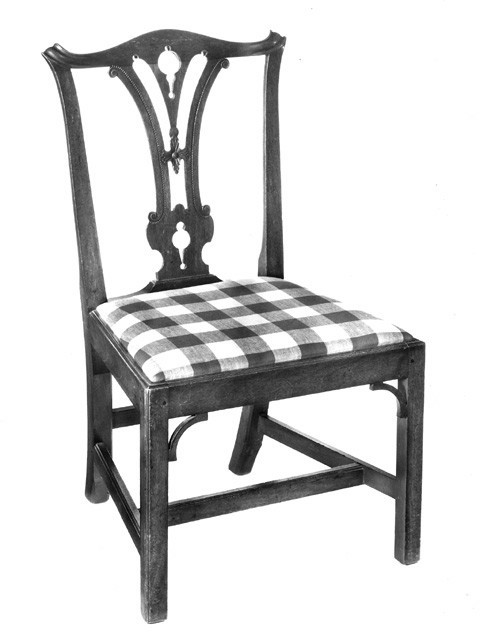
Side chair attributed to George Bright, Boston, Massachusetts, ca. 1765. Mahogany and maple. (Courtesy, Historic New England; photographed by Richard Cheek.)

John Singleton Copley, Mrs. Timothy Rogers (Lucy Boylston), Boston, Massachusetts, ca. 1766–1767. Oil on canvas. 50" x 40". (Courtesy, Museum of Fine Arts, Boston, bequest of Barbara Boylston Bean.)
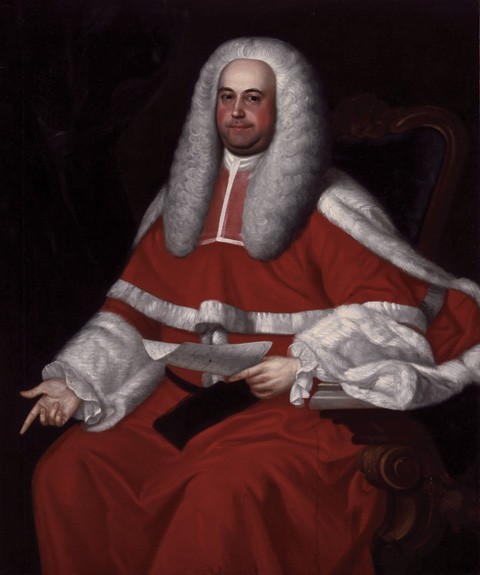
John Singleton Copley, Jonathan Belcher, Boston, Massachusetts, 1756. Oil on canvas. 47" x 39". (Courtesy, Beaverbrook Art Gallery, Fredericton, New Brunswick, Canada.)
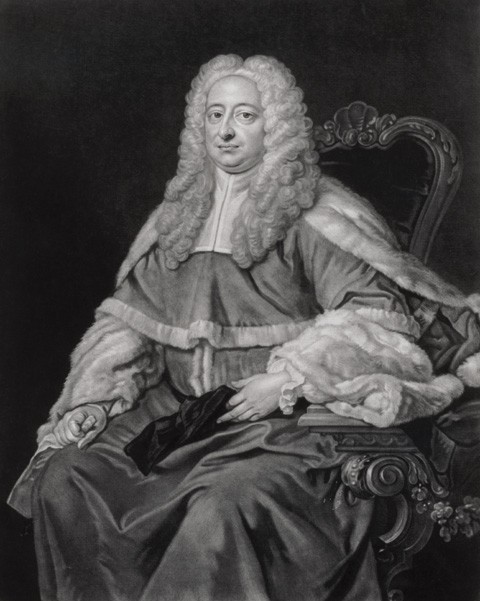
John Faber Jr. after Thomas Hudson, The Honourable William Fortesque, London, England, 1741. Mezzotint. 14 1/4" x 10 1/8". (Courtesy, National Portrait Gallery, London.) www.npg.org.uk
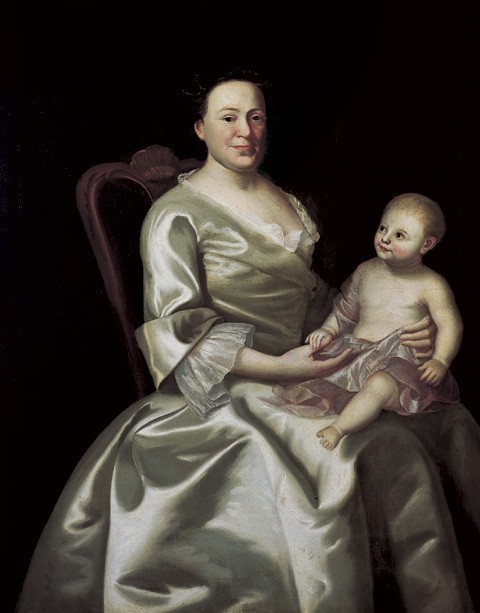
John Singleton Copley, Mrs. Daniel Rea and Her Daughter, Boston, Massachusetts, ca. 1757. Oil on canvas. 49" x 39". (Courtesy, Butler Institute of American Art, Youngstown, Ohio.)
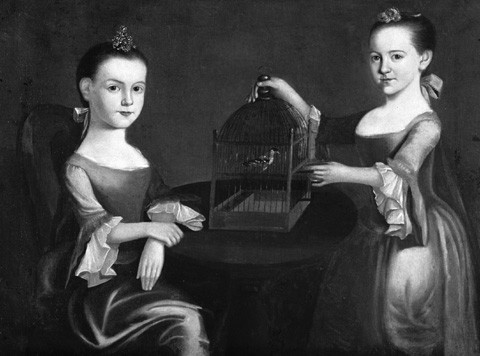
John Singleton Copley, The Two Sisters of Christopher Gore, Boston, Massachusetts, ca. 1755. Oil on canvas. 29 1/2" x 39 1/2". (Courtesy, Gore Place Society, Waltham, Massachusetts.)
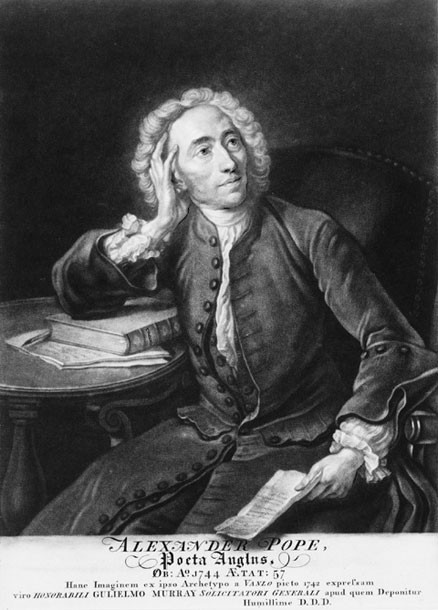
John Faber Jr. after J. B. Van Loo, Alexander Pope, 1742. Mezzotint. 12 1/8" x 10". (Courtesy, Trustees of the British Museum, London.) © The Trustees of the British Museum. Shared under a Creative Commons Attribution-NonCommercial-ShareAlike 4.0 International (CC BY-NC-SA 4.0) licence.

John Smibert, Sir Francis Grant and His Family, Edinburgh, 1718. Oil on canvas. 85" x 125". (In a Private Scottish Collection.)

John Smibert, Sir Francis Grant and His Family, Edinburgh, 1718. Oil on canvas. 17" x 27 3/4". (In a Private Scotish Collection.)
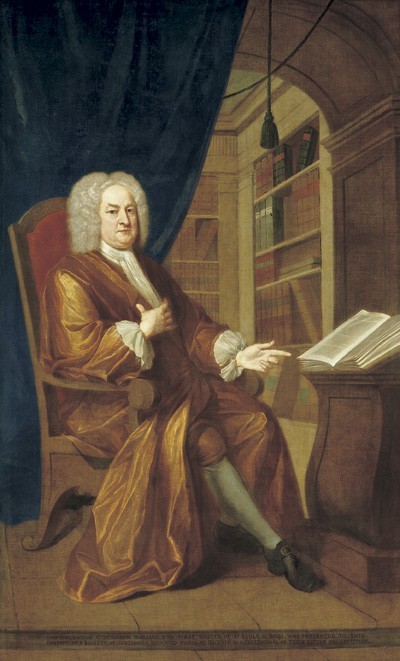
John Smibert, Benjamin Morland, London, 1724. Oil on canvas. 95 1/4" x 59". (Courtesy, Yale Center for British Art, Paul Mellon Collection.)

John Smibert, George Berkeley, London, ca. 1726. Oil on canvas. 41" x 29 1/2". (Courtesy, National Portrait Gallery, London.) www.npg.org.uk
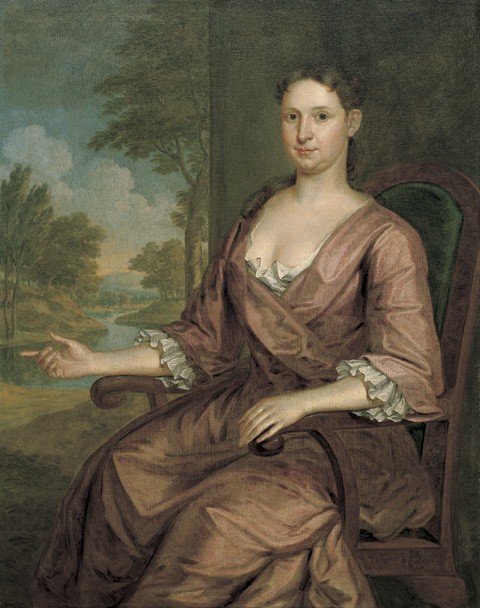
John Smibert, Mrs. Hugh Hall, Boston, 1733. Oil on canvas. 50 1/8" x 40 1/8". (Courtesy, Denver Art Museum.)
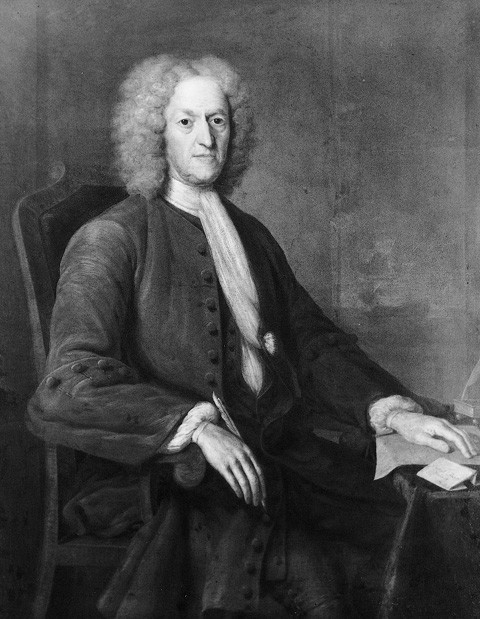
John Smibert, Daniel Oliver, Boston, 1729. Oil on canvas. 50" x 39 1/8". (Collection of Andrew Oliver Jr., Daniel Oliver, Mrs. Daniel Morley.)

George Vertue, Self-Portrait, London, 1741. Drawing in pencil and red chalk. 9 1/4" x 5 1/2". (Courtesy, National Portrait Gallery, London.) www.npg.org.uk
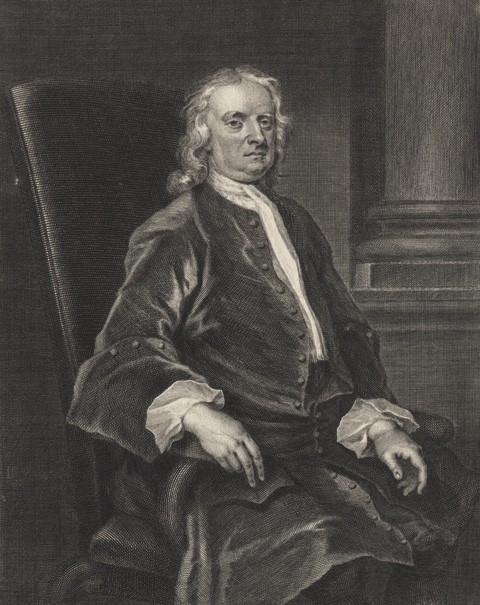
George Vertue after John Vanderbank, Sir Isaac Newton, London, 1726. Engraving on paper. 8 5/8" x 7 1/4". (Courtesy, National Portrait Gallery, London.) www.npg.org.uk

Joseph Badger, Cornelius Waldo, Boston, 1750. Oil on canvas. 50" x 40". (Courtesy, Worcester Art Museum, Gift of Hester Newton Wetherell Estate.)

John Smibert, Francis Brinley, Boston, 1729. Oil on canvas. 50" x 39 1/4". (Courtesy, The Metropolitan Museum of Art, Rogers Fund, 1962 (62.79.1)Photograph © 1991The Metropolitan Museum of Art )
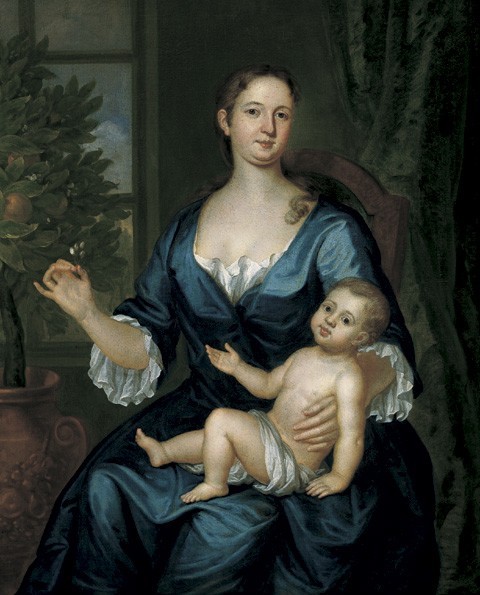
John Smibert, Mrs. Francis Brinley, Boston, 1729. Oil on canvas, 50" x 39 1/4". (Courtesy, The Metropolitan Museum of Art, Rogers Fund, 1962 (62.79.2) Photograph © The Metropolitan Museum of Art.)

John Singleton Copley, Charles Pelham, Boston, Massachusetts, ca. 1753–1754. Oil on canvas. 36" x 28". (Private collection.)
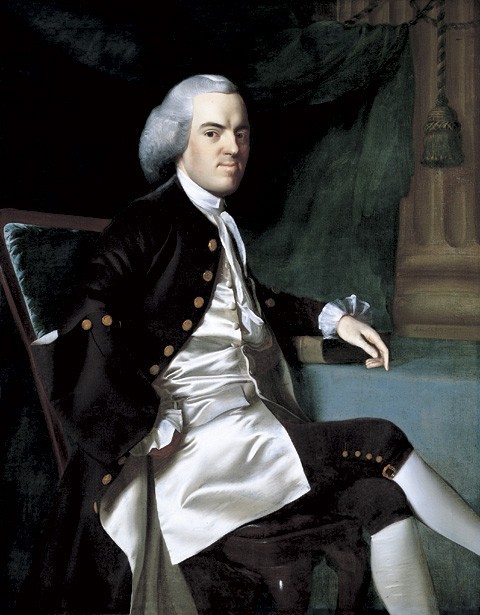
John Singleton Copley, Daniel Hubbard, Boston, Massachusetts, 1764. Oil on canvas. 50" x 39 3/4". (Courtesy, Art Institute of Chicago, Purchase Fund.)

John Singleton Copley, John Hancock, Boston, Massachusetts, 1765. Oil on canvas. 49 1/2" x 40 1/2". (Courtesy, Museum of Fine Arts, Boston, deposited by the City of Boston.)
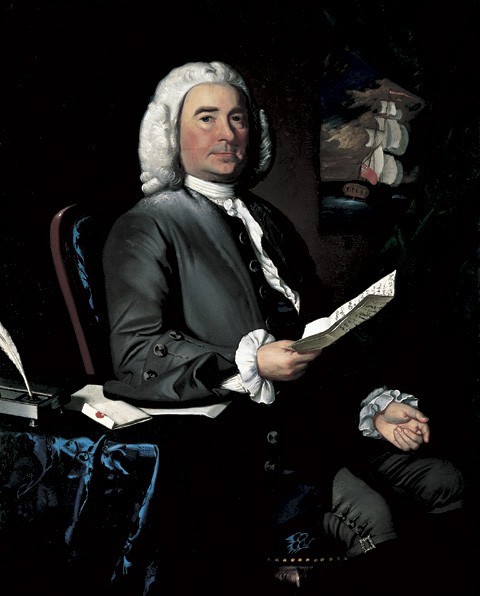
John Singleton Copley, Thomas Greene, Boston, Massachusetts, 1758. Oil on canvas. 50" x 40". (Courtesy, Cincinnati Art Museum, gift of Mrs. Carlos A. Hepp.)
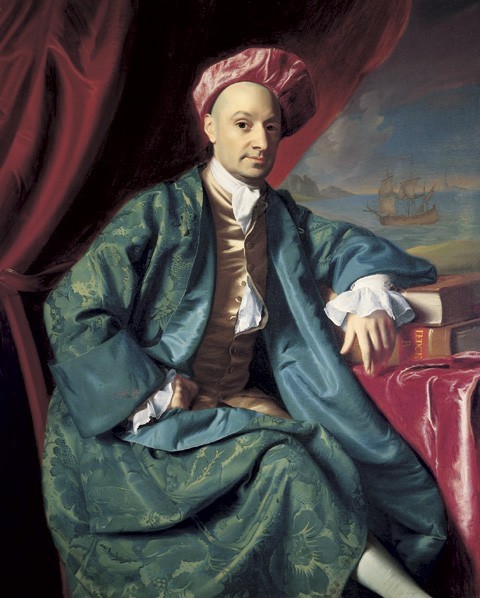
John Singleton Copley, Nicholas Boylston, Boston, Massachusetts, 1767. Oil on canvas. 49" x 40". (Courtesy, Harvard University Portrait Collection, Cambridge, Massachusetts, bequest of Ward Nicholas Boylston, 1828.) The sitter wears a cut-velvet cap that matches the table covering.

Sir Anthony Van Dyck, Charles I, Queen Henrietta Maria, Prince Charles, and Princess Mary, London, 1632. Oil on canvas. Dimensions not recorded. (Courtesy, The Royal Collection ©, Her Majesty Queen Elizabeth II, London, England.)

Peter Tillemans, An Artist’s Studio, London, ca. 1716. Oil on canvas. Dimensions not recorded. (Castle Museum, Norwich, England.)
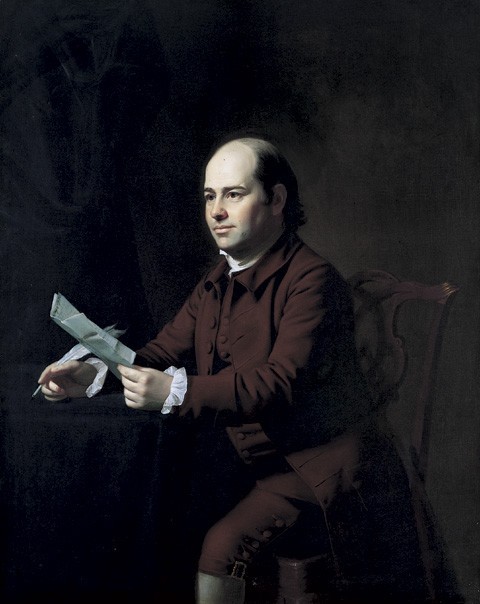
John Singleton Copley, Miles Sherbrook, New York, ca. 1771. Oil on canvas, 49 1/2" x 39". (Courtesy, Chrysler Museum of Art, gift of Walter P. Chrysler Jr., in memory of his grandparents, Anna-Maria Breymann and Henry Chrysler.)

John Singleton Copley, John Greene, Boston, Massachusetts, ca. 1769. Oil on canvas. 49 1/8" x 39 1/2". (Courtesy, Currier Art Museum, Manchester, New Hampshire, Museum Purchase: Currier Funds, 1935.4.)
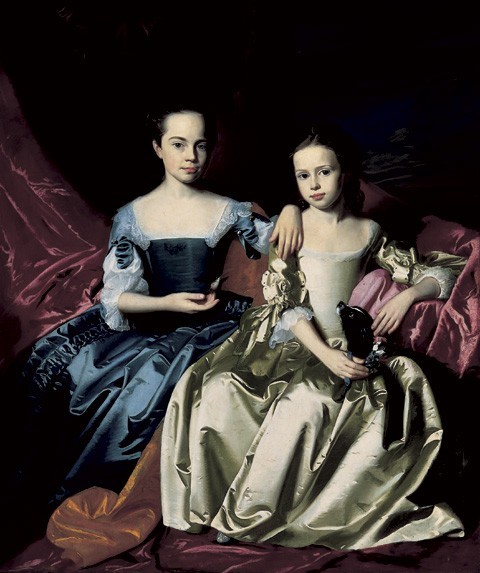
John Singleton Copley, Mary and Elizabeth Royall, Boston, Massachusetts, ca. 1758. Oil on canvas. 57 1/2" x 48". (Courtesy, Museum of Fine Arts, Boston, Julia Knight Fox Fund, 1925.)
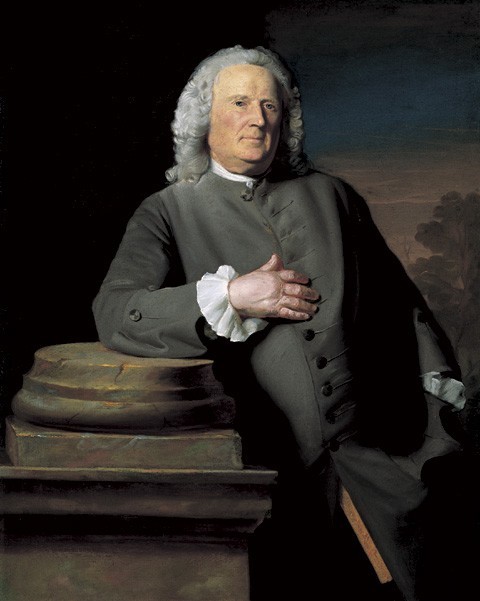
John Singleton Copley, Epes Sargent, Boston, Massachusetts, ca. 1760. Oil on canvas, 49 7/8" x 40". (Courtesy, National Gallery of Art, Washington, D.C., gift of the Avalon Foundation.)

John Singleton Copley, Mrs. William Eppes (Abigail Pickman; later Mrs. Sylvester Gardiner), ca. 1769. Oil on canvas. 50" x 40". (Courtesy, Brooklyn Museum.)
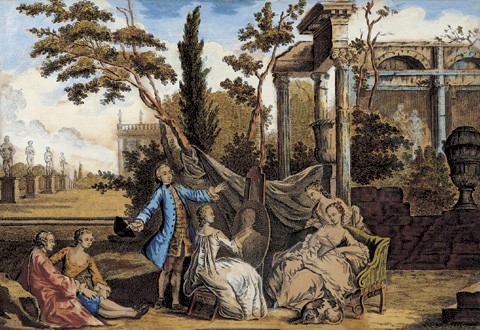
Painting, printed and sold for F. Bull on Ludgate Hill, J. Boydell in Cheapside, and W. Herbert on London Bridge, 1766–1775. Line etching. 9 3/4" x 13 3/4". (Courtesy, Winterthur Museum.)

John Singleton Copley, Mrs. Thomas Gage (Margaret Kemble), New York, 1771. Oil on canvas. 50" x 40". (Courtesy, Putnam Foundation, Timken Museum of Art.) www.timekenmuseum.org
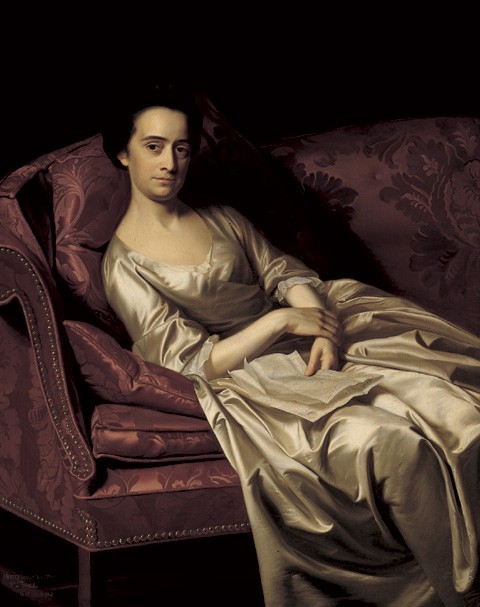
John Singleton Copley, Portrait of a Lady, New York, 1771. Oil on canvas. 48 1/2" x 39 1/2". (Courtesy, Los Angeles County Museum of Art, Museum Acquisition Fund.)
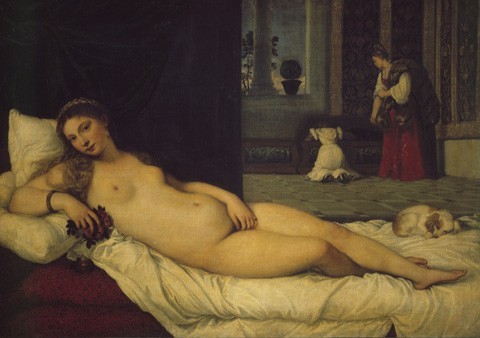
Titian (Tiziano Vecelli), Venus of Urbino, Venice, 1504. Oil on canvas. 46 3/4" x 64 7/8". (Uffizi, Florence, Italy, Alinari Art Resource, New York.)

John Singleton Copley, Dorothy Quincy, Boston, Massachusetts, ca. 1772. Oil on canvas. 50" x 39". (Courtesy, Museum of Fine Arts, Boston, Charles H. Bailey Fund and partial gift of Anne B. Loring.)
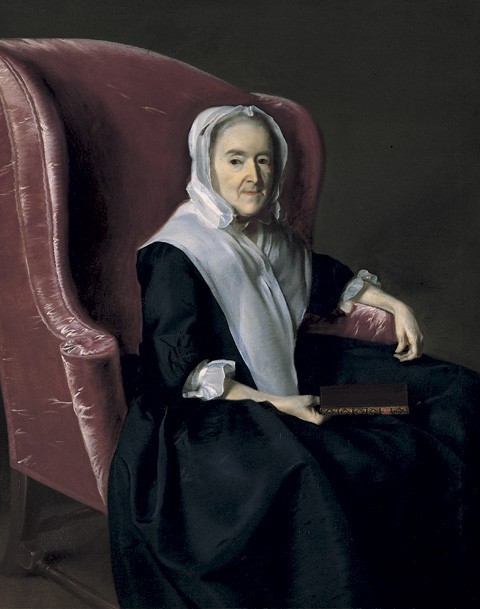
John Singleton Copley, Mrs. John Powell, Boston, Massachusetts, ca. 1764. Oil on canvas. 50" x 40". (Courtesy, Cleveland Museum of Art, gift of Ellery Sedgwick Jr., in memory of Mabel Cabot Sedgwick, 1994.)

John Singleton Copley, Reverend John Ogilvie, New York, 1771. Oil on canvas. 50" x 40". (Courtesy, Trinity Church, New York.)

John Singleton Copley, Moses Gill, Boston, Massachusetts, 1764. Oil on canvas. 49 3/4" x 39 1/2". (Courtesy, Museum of Art, Rhode Island School of Design, Jesse Metcalf Fund; photography by Erik Gould) www.risd.edu
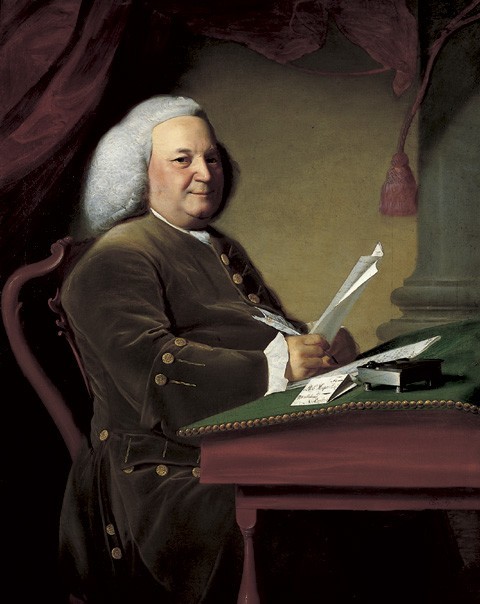
John Singleton Copley, Robert Hooper, Boston, Massachusetts, 1767. Oil on canvas. 50" x 39 1/4". (Courtesy, Pennsylvania Academy of the Fine Arts, Philadelphia, Henry S. McNeil Collection, given in loving memory of her husband by Lois F. McNeil and in honor of their parents by Barbara and Henry A. Jordan, Marjorie M. Findlay, and Robert D. McNeil.)
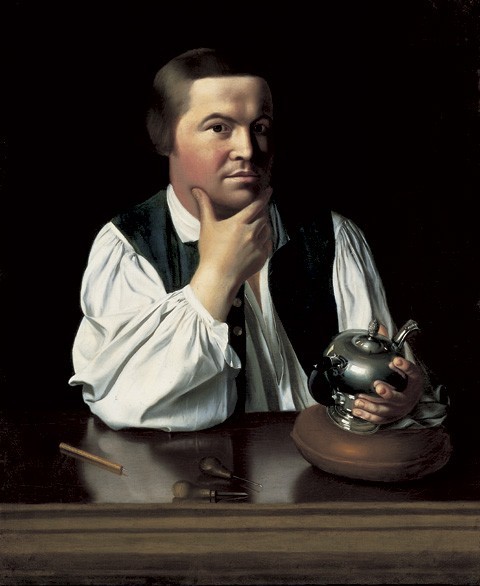
John Singleton Copley, Paul Revere, Boston, Massachusetts, 1768. Oil on canvas. 35" x 28 1/2". (Courtesy, Museum of Fine Arts, Boston, gift of Joseph W. Revere, William B. Revere, and Edward H. R. Revere.)
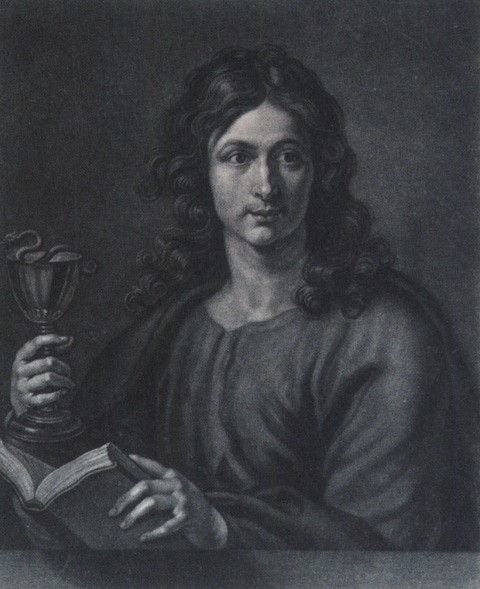
John Faber Jr., St. John, Apostle and Evangelist, 1754. Mezzotint, 12 3/4" x 8 3/4". (Courtesy, Fine Arts Museums of San Francisco, Achenbach Foundation for Graphic Arts.)

John Singleton Copley, Thomas Hancock, Boston, Massachusetts, 1764–1766. Oil on canvas. 95 5/8" x 59 1/2". (Courtesy, Harvard University Portrait Collection, Cambridge, Massachusetts, given by John Hancock, nephew of Thomas Hancock, to Harvard College, 1766.)
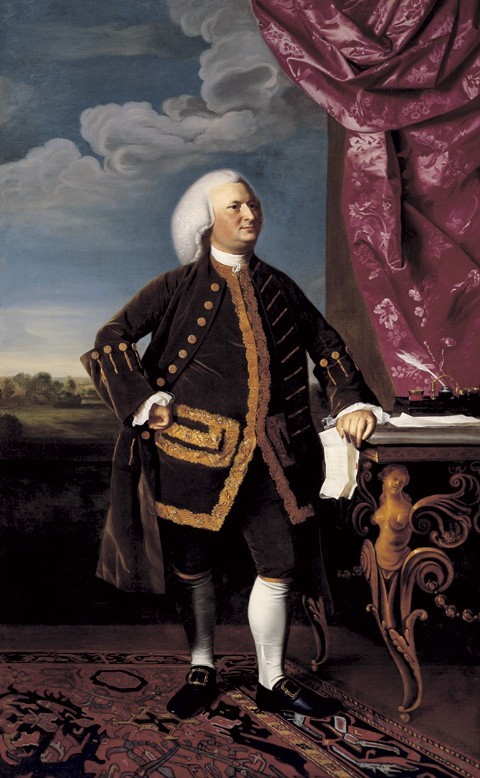
John Singleton Copley, Jeremiah Lee, Boston, Massachusetts, ca. 1769. Oil on canvas. 95" x 59". (Courtesy, Wadsworth Atheneum, Ella Gallup Sumner and Mary Catlin Sumner Collection Fund.)

John Faber Jr. after John Vanderbank, Sir William Lee, London, 1738. Mezzotint, 18 5/8" x 13 3/4". (Courtesy, Trustees of the British Museum, London.) © The Trustees of the British Museum. Shared under a Creative Commons Attribution-NonCommercial-ShareAlike 4.0 International (CC BY-NC-SA 4.0) licence.

The Prodigal Son Receiving His Patrimony, published and sold by Shelton & Kensett, Cheshire, England, 1814. Line etching. 14 3/4" x 10 7/8". (Courtesy, Winterthur Museum.) The cartoonish chair in this image resembles the one in Copley’s portrait of Thomas Hancock (see fig. 52).
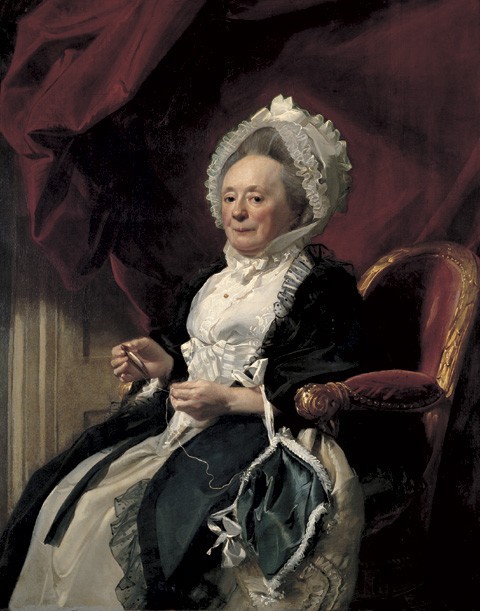
John Singleton Copley, Mrs. Seymour Fort(?), London, ca. 1778. Oil on canvas. 49 1/2" x 39 5/8". (Courtesy, Wadsworth Atheneum.)
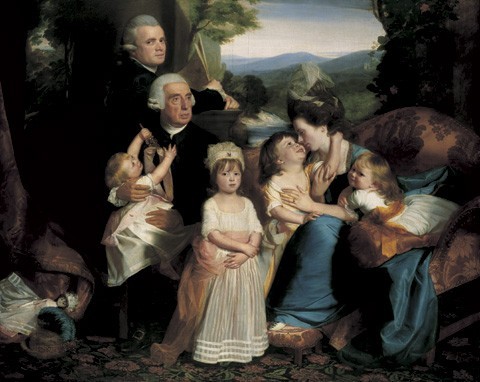
John Singleton Copley, The Copley Family, 1776/1777. Oil on canvas. 72 1/2" x 90 1/4". (Courtesy, National Gallery of Art, Washington, D.C., Andrew W. Mellon Fund.)
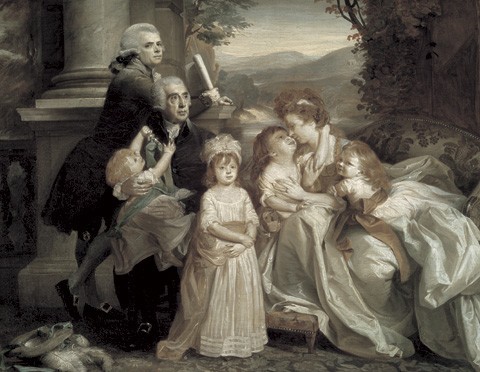
John Singleton Copley, The Copley Family, ca. 1788. Oil on canvas. 20 1/2" x 25 1/2". (Courtesy, Museum of Fine Arts, Boston, Henry H. and Zoe Oliver Sherman Fund and gift of Daniel and Robert Amory.)

Joseph Steward, Reverend Eleazar Wheelock, Hampton, Connecticut, 1793–1796. Oil on canvas. 79 1/8" x 69 7/8". (Courtesy, Hood Museum of Art, Dartmouth College, Commissioned by the Trustees of Dartmouth College.)

Ralph Earl, Martha Tennent Rogers and Daughter, Hartford, Connecticut, 1788. Oil on canvas. 34 1/8" x 29". (Courtesy, National Gallery of Art, Washington, D.C., gift of Edgar William and Bernice Chrysler Garbisch.)

Ralph Earl, Mrs. Alexander Hamilton, New York, 1787. Oil on canvas. 31 3/4" x 26 7/8". (Courtesy, Museum of the City of New York, gift of Mrs. Alexander Hamilton and General Pierpont Morgan Hamilton.)
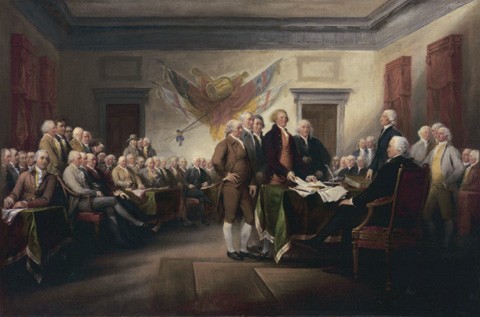
John Trumbull, The Declaration of Independence, July 4, 1776, New York and London, 1787–1820. Oil on canvas. 21 1/8" x 31 1/8". (Courtesy, Yale University Art Gallery.)
It is indisputably evident that a great part of every man’s life must be employed in collecting materials for the exercise of genius. Invention, strictly speaking, is little more than a new combination of those images which have been previously gathered and deposited in the memory. Nothing can come of nothing. He who has laid up no materials can produce no combinations.
—Sir Joshua Reynolds, 1771
His job was not . . . simply to record their faces but rather, as bricoleur, it was to construct a tableau in which the sitter was recorded accurately and her body, costume, gesture, setting, and accoutrements were recorded in what was understood to be an appropriate manner, referencing recognized cultural norms. . . . The synthesizing agent was the artist’s imaginative and recording skill; the measure of his success was in the patrons’ validation of the vision by purchase and integration of the canvas into the domestic visual and social landscape.
—Margaretta M. Lovell on John Singleton Copley[1]
Between 1758 and 1761 John Singleton Copley painted two portraits of men in similarly contemplative poses, the Reverend Edward Holyoke and John Bours (figs. 1, 2). Done relatively early in the artist’s career, both works display what American painting historian Jules Prown has described as Copley’s characteristic use of sharp contrasts, meticulous detailing, restrained colors that keep intact the illusion of physical reality, and placement of the subject near the picture plane to give the viewer a stronger sense of the sitter’s presence. A distinctively styled chair plays a prominent supporting role in each work. The pious Holyoke sits upright in a massive armchair with his arms firmly planted on those of his chair, which is entirely made from turned parts of various shapes and sizes. Bours, in contrast, relaxes on a roundabout or corner chair, his reclining posture facilitated by the low, curved crest rail. Beyond the design variations there is a crucial difference between the two chairs—one is real and the other is not. Holyoke presides in the Harvard President’s Chair that he gave to the college during his term in that office (1737–1769), an antiquated domestic object that acquired a new ceremonial function. Bours, a resident of Newport who traveled to Boston to have his portrait taken, is posed in a chair that combines the upper half of a corner chair (fig. 3) and the lower half of a cabriole leg side chair (fig. 4). It is an invention, a painterly fiction not in the sense that it is false but purposefully creative.[2]
The Bours chair parallels Copley’s frequent use of imaginative motifs—idealized classical settings, artful poses, and stylized costumes—to add visual and thematic complexity to portraits that, as noted by the authors of the 1995 catalogue John Singleton Copley in America, were never meant to be read as visual probate records. The merging of the real and the ideal in Copley’s art also reflects the fact that he occupied two distinct worlds: the real-life world of Boston with its actual people and houses and artifacts; and the artistic world of images largely conveyed through prints and paintings that encouraged the aesthetic enhancement of reality. This essay considers Copley’s creation of artificial furniture—the word “artificial” being used in the positive eighteenth-century manner to describe motifs painted in imitation of or as substitutes for actual objects. More than any other colonial American portrait painter, he strategically manipulated the design and placement of background elements, what Reynolds dismissed as “the minute peculiarities of the dress, furniture, or scene of an action.” A closer look at John Bours reveals that Copley never intended to paint either a real-life corner chair or a cabriole leg side chair. New England corner chairs with serpentine arm supports invariably had solid or pierced splats. The space below the crest rail where Bours’s left elbow rests is open. Equally inconsistent is the use of rectilinear stretchers between the legs. The stretchers on Boston-area cabriole leg side chairs typically are turned or shaped with combinations of cymas curves and flats. Instead, Copley fashioned an entirely new chair, a make-believe design that enhanced his characterization of the sitter yet remained legible because it adhered to artistic codes and stylistic norms familiar to all eighteenth-century viewers.[3]
The growing body of scholarship on Copley’s art of invention diverges from the traditional art historical emphasis on his technical virtuosity and visual empiricism, and the supposed colonial desire for pragmatic, “paint-me-as-I-am” imagery. Newer interpretations focus on reading his portraits as well-choreographed “authenticating narratives” that form “the rhetoric—not the record—of self-representation in eighteenth-century America.” This essay attempts to add the analytical gaze of a furniture historian to the more progressive methodologies of historians of paintings to suggest that Copley’s depiction of furniture often is more rhetorical than factual and indicative of alternative representational strategies—emulation, stylization, idealization, modification, and invention.[4]
On the most immediate level, a focused look at Copley’s furniture corrects basic interpretative errors. The sack-back Windsor armchair that appears in Eleazer Tyng (fig. 5) is described in John Singleton Copley in America as “a simple country piece far removed from the Rococo furniture in high English style in Copley’s more lavish pictures.” The authors associate Tyng’s overall visual and moral astringency with this chair, which is read as a symbol of his virtuous character and his status as an “ordinary man of the country.” But in Boston in the early 1770s Windsor furniture was novel and desirable, especially stylish Philadelphia forms like the Tyng chair. Even in the homes of the most affluent Americans, Windsor seating was prominently displayed in passageways, on porches, and in primary spaces such as parlors and dining rooms. Colonials would not have seen the chair in Tyng’s portrait as a symbol of rural roots or conservative cultural sensibilities but as a marker of sophistication, much like the stylish gilt-edged and painted paper wall treatment behind him. The chair, which may well have been owned by Copley, was used again in the portrait of the Reverend Thomas Cary (fig. 6), a sitter whose cultural and aesthetic sophistication is signaled by his learned pose in front of a full bookshelf and his imported silk damask “India” or “Turkish” gown. The same Philadelphia Windsor chair appears in Mr. and Mrs. Isaac Winslow (fig. 7) alongside a distinctive table that recently has been described as a “gateleg table—a somewhat old-fashioned piece of furniture.” In fact, this is an up-to-date London-style “spider leg” table that made its way into Copley’s studio about 1771 and appears in at least three other portraits—Dorothy Quincy (see fig. 45), Mrs. Richard Skinner (Museum of Fine Arts, Boston), and Mr. and Mrs. Thomas Mifflin (Historical Society of Pennsylvania). However, the goal of this essay is not to offer standard curatorial corrections of this sort but to consider Copley’s furniture—both real and imagined—in light of new scholarly insights about his use of fictive motifs to enhance his portraits.[5]
From early in his career, Copley pushed himself to create ever more challenging compositions and expand his repertoire of meaningful motifs that were variously located along a continuum between the real and the imagined. Margaretta Lovell argues that Copley’s complex portraits can be read on two levels: first, a recognition of the easily observable data that helps create a convincing depiction of the person being portrayed, “those knitted dabs of pigment so painstakingly mixed and tested and applied in response to visual facts like so many dabs of empirical stimuli on the tabula rasa of the artist’s mind”; and second, an acknowledgment of the polyvalent nature of his imagery, which is a “panoply of the observed, the symbolic, the imagined, the synthesized, the reconstituted, generated only in part out of what is seen.” This essay suggests that furniture often assumes an active role in these carefully orchestrated pictorial dramas.[6]
Many eighteenth-century American portraits were not painted in the sitter’s home, and therefore they do not show people surrounded by their own possessions. Patrons instead ventured to the artist’s studio, and while they were there the image was only partly completed. According to Sir Joshua Reynolds, “when the face is finished the rest is done without troubling the sitter.” Painters often added curtains, architectural elements, landscape views, furniture, and costumes after their sitters departed; the linear awkwardness and odd poses of several of Copley’s seated subjects reveal that he followed this practice. In the largest European painting studios, background painting was a task typically performed by journeymen or apprentices, a luxury not available to most American artists. In a 1768 letter to Benjamin West, a Philadelphia-born artist who had moved to London eight years earlier, Copley complained that he had to do all of his own painting. What he did not record in writing is exactly what specific artifacts or “props” were kept in his studio to facilitate this secondary work. Theodore Stebbins argues that “the reappearance of the same curtains, table coverings, tables, and chairs in various [Copley] portraits leads us to believe that these elements often represented the painter’s studio props rather than the subject’s own possessions.” But a closer look at the artifactual evidence in colonial American portraits suggests that painters did not keep prop-filled studios like those used by the leading painters in Europe or by American artists a century later (fig. 8). Stebbins’s assumption that Copley depicted studio props also fails to recognize the painter’s strategic use of the art of invention. As Jules Prown notes, Copley initially relied on accessible source materials, including the prints, drawings, and art books in the library of his stepfather, Boston engraver Peter Pelham, and the collection of European art books, drawings, prints, seals, and plaster casts in the studio of the recently deceased local painter John Smibert, who was a friend, neighbor, and sometime collaborator of Pelham’s. But before long Copley turned to his artistic imagination to advance the visual and cultural potency of his portraiture.[7]
To be sure, Copley made use of many real-life props and was unrivaled at convincingly recording the color, texture, and luster of wood, textiles, silver, and pewter. Later described by West as “the most tedious of all painters,” Copley was a methodical technician who took an unusually long time to record the sitter’s likeness as well as costume, setting, and furniture. The historically accurate furniture in his portraits provides a useful reference point against which more inventive forms such as Bours’s chair can be measured. One piece that can confidently be called an actual prop in Copley’s studio is a neat and plain Boston side chair that appears in many portraits, although typically only part of the crest rail or splat is visible (figs. 9, 10). Some pictures reveal the chair’s fixed over-the-rail upholstery and characteristic Boston double-nailing pattern above the front legs. The distinctive, British-influenced splat pattern matches documented chairs made by George Bright (fig. 11), but it is likely that many of his contemporaries produced similarly styled forms. Copley portrayed other sitters, including John Hancock (see fig. 31), in Boston late baroque side chairs with cabriole legs and solid splats. Again, some feature slip seats and others have over-the-rail upholstery and double rows of decorative brass nailing pattern above the legs.[8]
Copley’s unrivaled empirical vision also is evident in the upholstered armchair in three portraits painted between 1766 and 1767, Mrs. Thomas Boylston (Harvard University Portrait Collection), Young Lady with a Bird and Dog (Toledo Museum of Art), and Mrs. Timothy Rogers (fig. 12). This stylish “French” or “elbow” chair, which either was made in Boston or imported from England, features upholstered armrests with decorative edge nailing, carved arm terminals, molded Marlborough legs, and Chinese fretwork knee brackets. On the Boylston and Rogers chairs the damask patterns are an exact match right down to the depiction of the edge trim or self-welting and the off-center seam on the back. Copley may have owned this expensive chair and moved it from his parlor or sitting room into the studio. Another possibility is that he kept the design alive through the use of tracings, which he often used to test various compositional possibilities. In a 1775 letter to his half brother the engraver Henry Pelham, Copley described the process of tracing groups of figures on a piece of paper before adding detail and shading, and then retracing them onto a more fully developed scene “just in the way you have seen me proceed with Drapery’s, etc, in my portraits.”[9]
Copley’s earliest paintings reveal the influence of two key sources: European prints and the portrait method of several established Boston painters, notably John Smibert and Joseph Blackburn. Imported prints were an essential and affordable way for American painters to learn the latest European styles. Copley’s stepfather presumably taught him the technical conventions of printmaking as well as the basic rules of portraiture, what Lovell describes as the “prescribed and naturalized codes of deportment for the body and metaphorical contexts to enhance the viewer’s understanding of the sitter.” After Pelham’s death in 1751, Copley continued to have access to the books and prints in his stepfather’s library and the art of other Boston painters. In the 1940s Waldron Phoenix Belknap systematically identified the essential role of English print sources in Copley’s portraiture, including Jonathan Belcher (fig. 13), which was derived from John Faber’s mezzotint after Thomas Hudson (fig. 14). Copley substituted Belcher’s likeness but copied virtually everything else verbatim—the sumptuous judicial robe, the gilt slab table, and the upholstered backstool with a central shell on the crest. Shortly thereafter, he painted Mrs. Daniel Rea and Her Daughter in which he reinvented the Belcher chair, turning it from a backstool into a side chair with a splat back (fig. 15). He used the same steeply shouldered crest rail and wide-lobed central shell motif and adorned the newly rounded stiles with a stylized version of the original foliate carving. Also inspired by a print source is the tea table or candlestand in The Two Sisters of Christopher Gore (fig. 16). Framed by a pair of generic, late baroque splat-back chairs, this relatively cartoonish table features a massively overscaled baluster and atypical three-tiered block supporting the top and is derived from Alexander Pope (fig. 17), a Faber print that has been linked to John Bours’s melancholy pose (see fig. 2).[10]
Copley began his career shortly after the death of John Smibert, Boston’s leading painter in the second quarter of the eighteenth century. After immigrating to America from Scotland in 1728, Smibert played a key role in introducing colonial painters to an orthodox, early-eighteenth-century portrait style that combined specific visual norms with appropriate idealization to convey the sophistication and enlightenment of the sitter. He influenced many younger artists, and his approach to portrait painting directly inspired Copley’s first forays into the art of invention.[11]
Born into a relatively modest Presbyterian family in Edinburgh, Smibert trained in London as a house painter, plasterer, and coach painter before working as a copyist for art dealers. Through the latter experience and his subsequent tutelage under Sir Godfrey Kneller, Smibert became familiar with more refined modes of easel painting. After he returned to Edinburgh in 1717, Smibert received a major commission to paint a series of individual portraits of the family of Sir Francis Grant, a powerful and affluent political figure. Apparently satisfied with the initial portraits, Grant gave the painter an even more lucrative commission to do a large portrait of the entire family (fig. 18). The painting is monumental in scale and ambition; it also is the genesis for an invented sitter’s chair that Smibert used in his portraits for years to come. In technique and size, Smibert’s preliminary oil sketch for Sir Francis Grant and His Family (fig. 19) is markedly different from the final portrait. As Richard Saunders notes, the “animated and expressive” character and “atypically resonant” coloring of the sketch more closely resembles British conversation pieces, a type of informal group portrait that shows families or friends engaged in leisure activities such as dining, dancing, and hunting. Grant may have felt that Smibert’s proposed depiction was too flamboyant in its characterization of the family and their surroundings, thus the large final portrait is more tightly focused and restrained. In describing the complex relationship between portraitist and sitter, Marcia Pointon notes:
The contract, written or spoken, can never embody the content of the picture and never articulate the reaffirmation or redefinition of class boundaries that is fundamental to the act of portraiture. It is at one and the same time a public art bound by conventions and a supremely intimate act of communication. This combination of factors and the tensions between them rendered the portrait painter especially vulnerable within the artistic community, yet also extremely powerful.[12]
Whether initiated by Grant or Smibert, the alterations to the Grant family portrait group included significant changes to the furniture. In the sketch Grant and his eldest daughter sit in carved and gilded armchairs with red upholstery, examples of the opulent Italianate style popular in England in the early eighteenth century. Expensive Italian furnishings were widely imported, and leading English designers, notably John Talman and William Kent, traveled to Italy to study both classical and contemporary design. The young Smibert probably wanted to flatter the Grants by showing them with the same type of highly sophisticated furniture favored by London’s leading tastemakers. In toning down the animated character for the final portrait, Smibert muted the lively design of the furniture. Black upholstery, probably meant to emulate leather, replaced the red chair covers. The serpentine shape of the crest rail on the armchairs was flattened, and the original gilt chair frames replaced with plain wooden frames. Two additional leather-covered backstools appear against the back wall. The Grant family project added a crucial furniture prop to Smibert’s artistic tool kit, not a real chair, but a mimetic motif that he referenced when needed and that subsequently influenced the design of the sitter’s chair in Copley’s earliest portraits.[13]
After touring Italy for several years, Smibert established a studio in London. His 1724 portrait of Benjamin Morland (fig. 20) features a red upholstered armchair with a shaped skirt and flared legs that unmistakably recalls the chairs in the Grant portrait and sketch. As in many other early-eighteenth-century portraits and the prints they inspired, the specific structural and stylistic details of the chair were simplified for the sake of visual clarity. Portrait painters of the era sometimes accurately depicted real chairs, but there was no pressing aesthetic or cultural reason to do so—the simplified forms were easier to paint and they were just as effective in creating an ennobling depiction of the sitter. Chairs with upholstered backs provided a solid color field, a sort of mini-canvas, against which the artist could silhouette the sitter. In the manner of other eighteenth-century portrait chairs, the Smibert chair features an exposed wooden frame around the upholstery, which has no visual means of attachment in the form of decorative nails or an ornamental cloth tape used to cover small upholstery tacks. On the Morland chair, Smibert simplified the scrolled arm terminals and added a break-arch crest rail. The bombé-front podium or book stand shows the same indistinct and unlikely paneled joinery found on the side apron on the chair. The podium’s perfectly symmetrical serpentine profile incorporates implausible architectural molding transitions, which suggests that this piece likewise is more imaginative than real.
The Smibert chair changed again in the portrait of George Berkeley with the addition of a flat crest rail with indented corners (fig. 21). In contrast to the initial design changes made to the Grant family chairs, the subsequent modifications to this prop chair probably were motivated by artistic license rather than patron demand. The Berkeley portrait also marks an association that dramatically changed Smibert’s life. An educator deeply concerned about the rise of Catholicism and Great Britain’s uncertain economy, Berkeley obtained a charter in the early 1720s to create a college in Bermuda. Around the time his portrait was painted, Berkeley asked Smibert to join the venture as the “Professor of Painting” to teach painting and architecture, and also to “impart the virtuous attributes of Christianity and European civilization.” The painter arrived in Rhode Island with Berkeley in 1728 and, because of the financial collapse of the planned college, soon moved to Boston, where he stayed for the rest of his career.[14]
The Smibert chair traveled with him across the Atlantic—not in the form of a real chair, but in his mind’s eye. In Boston the chair’s evolution or, perhaps more accurately, its devolution continued. In the 1730 portrait of Mrs. Hugh Hall (fig. 22) the design incorporates a slightly arched crest rail, cabriole legs, and a longer arm with distinctively rounded terminals. Daniel Oliver (fig. 23) sits in a version with a scrolled crest like that in the earlier Grant portraits and strikingly similar to the armchair in George Vertue’s 1741 self-portrait (fig. 24). The addition of cabriole legs on the chair in the Hall portrait and many subsequent works brings to mind Vertue’s engraving of Sir Isaac Newton after John Vanderbank (fig. 25), a print that in turn was the source for the massive backstool regularly depicted by Boston painter Joseph Badger (fig. 26). A distinctive pairing of Smibert chairs appears in the matching portraits of Francis Brinley and his wife. The husband sits in an arch-topped variation on which the arms slant downward; a landscape view of his hometown of Roxbury appears outside the window (fig. 27). His wife and infant son are seated in a matching backstool (fig. 28), a type of upholstered chair without arms often used by women because it easily accommodated their voluminous dresses. Compositionally, Mrs. Brinley’s left arm substitutes for the exposed wooden arm on her husband’s chair.[15]
The Smibert chairs, like other invented sitter’s chairs, succeeded because they were instantly recognizable and visually potent. While certain real-life details such as carved elements were simplified on canvas, the large scale and rich upholstered surfaces unmistakably signaled the elevated taste and cultural literacy of the sitter. More than just common household furniture, these painted chairs functioned as domestic thrones, turning the ordinary into the extraordinary without violating established aesthetic and cultural norms.
Copley’s earliest portraits document his direct familiarity with the Smibert chair. The sixteen-year-old painter portrayed his stepbrother Charles Pelham seated in a backstool upholstered with a velvety material that matches the adjacent curtain and tablecloth (fig. 29). As on the Smibert chair, the backstool features an exposed frame, a form not commonly made in America at the time. Again there is no visual evidence of decorative nails or cloth tape around the perimeter of the upholstery. Copley reincarnated the Pelham backstool in at least four later works—James Murray (private collection), John Scollay (Shelburne Museum), Mr. Benjamin Hallowell (private collection), and Daniel Hubbard (fig. 30). The Hubbard chair, in particular, reveals Copley’s increasing use of fictive imagery, what Lovell describes as his “masterful yoking of the local and the imagined, the seen and the conjured, the unique and the culturally-prescribed.”[16]
The lower portion of the Hubbard chair consists of a compass frame with a removable slip seat and cabriole legs with shaped knee blocks, features commonly found on midcentury Boston chairs as in John Hancock (fig. 31). However, the upper part of the Hubbard chair returns to the same generic backstool design used in the earlier Pelham portrait. This is an especially bold aesthetic conceit given that the velvety blue upholstery does not match the brown leather on the slip seat. In her analysis of Copley’s costumes, Leslie Reinhardt suggests that his invented motifs worked not only because they were part of the larger strategy of idealization in eighteenth-century portraiture but also because they persuaded the viewer of their reality. No written evidence survives to suggest how Hubbard and other patrons reacted to being portrayed in such atypical chairs, but Copley’s great commercial success indicates that sitters implicitly trusted his artistic judgment, including his use of imagined furniture forms.[17]
The 1758 portrait of Thomas Greene presents an even more fully realized example of Copley’s artifactual inventiveness (fig. 32). As on the Hubbard chair, the lower half of Greene’s chair—with its compass-shaped seat with over-the-rail upholstery, decorative brass nailing, and carved cabriole legs—records a stylish Boston chair type while the upper half returns to the Smibert-style backstool design. In this portrait, the upholstered back is covered with a lustrous blue silk damask that matches the tablecloth but does not match the seat cover, a duller dark green material with spiky blue decorative stitching. Within Copley’s oeuvre, the Greene chair represents a distinctive mode of fictionalizing. Reinhardt indicates that many of his invented costumes featured plainer fabrics and simpler profiles to suggest a stylistic timelessness in the face of the ever-changing dictates of contemporary fashion. Greene’s chair, in contrast, is intentionally flamboyant. So too is the silk tablecloth to his right. The damask material is painted in a highly convincing manner but does not sit flat the way real tablecloths do. As on painted costumes and draperies, the fabric was artistically arranged to create folds or gathers that catch the light in interesting ways and add to the illusion of three-dimensionality. The untrimmed blue damask tablecloth is the strongest visual element in this portrait, a reusable and cost-efficient studio prop that apparently inspired Copley to reconceptualize the back of Greene’s chair.[18]
The table coverings in Thomas Greene and Nicholas Boylston (fig. 33) document another type of inventive strategy used by Copley. In real life, colonial tables of all sorts were covered with tablecloths, but not with expensive silk damasks, harateens, moreens, brocades, or cut velvets. Copley’s presentation of these materials is another artistic conceit, a bravura gesture that demonstrated his technical prowess and paralleled the depiction of lavish draperies in earlier paintings and prints of European royalty and aristocracy (fig. 34). For most colonial Americans, such extravagant display would have been prohibitively expensive and functionally impractical. Patterned silk damasks and brocades or thickly piled velvets would have made for poor writing surfaces, unlike plain broadcloth, which provided just the right amount of padding for quill pens. Delicate fabrics also would have been difficult to clean, which is why tea and dining tables were covered with washable white linen or cotton. But in the imaginative pictorial world of eighteenth-century portraiture, artistic flattery and heightened reality of the sort seen in Copley’s portraits was encouraged. From the time of the Renaissance, European painters filled in the backgrounds of portraits with colorful fabrics, including gracefully festooned and classically inspired curtains such as those in Peter Tillemans’ 1716 painting, An Artist’s Studio (fig. 35). Virtually all colonial American artists—including Smibert and Blackburn—inherited this painterly convention of augmenting compositions with colorful curtains, tablecloths, and furniture upholstery. None, however, rivaled Copley’s ability to incorporate these materials in such an artful and rhetorical way. As noted in John Singleton Copley in America, “the quantity, shine, and texture of luxurious fabrics are fundamental agents for Copley in his strategic interpretation of a sitter.”[19]
In 1766 West advised Copley not to “trust any resemblanc of any thing fancey, except the dispositions of they figures and they adjustments of Draperies, So as to make an agreable whole. for in this consists the work of fencey and test [taste].” In other words, West proposed following the established rules of portraiture and representation in most areas but using the imagination when posing the sitter and “the stuff with which anything is draped; clothing or hangings of any kind.” Copley’s creative interpretation of drapery is evident in Miles Sherbrook (fig. 36), which he painted during his six-month stay in New York in 1771. Sherbrook sits in a fashionable New York rococo side chair and works at a covered card table with the same projecting squared corners as the table in Thomas Greene, a shapely studio prop that provided a more artistically appealing line underneath a tablecloth than a straight-edged card table. In Sherbrook’s portrait, the table is not covered with a tablecloth. Instead, Copley visually extended the blue curtain so that it drops first behind and then rises over the entire surface of the table. Other Copley portraits, including The Honorable John Erving (Smith College Museum of Art) and John Hancock (see fig. 31), feature the same visually appealing but wholly impractical and ahistorical practice. A green broadcloth cover of the type commonly used on tables during the period appears in John Greene (fig. 37), although Copley heeded West’s instructions and artfully gathered the material below the inkstand—an artistic gesture that paralleled Sir Joshua Reynolds’s observation that “it requires the nicest judgment to dispose the drapery, so that the folds shall have an easy communication, and gracefully follow each other.” Copley’s creative manipulation of the tablecloth adds a sense of motion to the image, as if Greene has just pushed the objects on the table forward several inches. Here Copley’s art of invention is evident not in the material itself but in its imaginative disposition, the same strategy that informs the more fully fictive table coverings in the portraits of Sherbrook and Hancock.[20]
Copley’s painterly depiction of curtains, tablecloths, and furniture upholstery knew few boundaries. Stebbins describes how in many of Copley’s portraits these lavish and expensive materials “seem more . . . real than the arms and legs and torsos of the sitters.” Mary and Elizabeth Royall (fig. 38), an ambitious early double portrait, epitomizes the artist’s fanciful presentation of textiles. Both girls appear to sit on a serpentine-crested sofa whose exact form is obscured by a billowing upholstery cover that, instead of falling to the floor, rises upward like a curtain or festoon off the left side of the sofa—an artistic flourish that makes it unclear whether the girls are sitting on a piece of furniture or floating on a cloud of drapery. The abundance of expensive silk may, as suggested in John Singleton Copley in America, allude to the materialism of their father, Isaac Royall, but it has another essential function. Much as Copley’s manipulation of pose reveals a carefully choreographed body rhetoric in his work, his interpretations of upholstery, curtains, and tablecloths form a drapery rhetoric that visually enhances the composition and thematically alludes to virtuous feminine attributes such as delicacy, lightness, grace, and beauty. To be sure, reading gender into the painter’s use of drapery must be done cautiously. While many portraits show female sitters surrounded by great volumes of fabric, many men, including Reverend Thomas Cary and Nicholas Boylston (see figs. 6, 33), are shown in ornate gowns alongside equally colorful tablecloths and curtains. Yet it is women who are associated with the most imaginative costumes and drapery motifs in Copley’s art. Within the visual orthodoxy of eighteenth-century self-representation, men of stature such as Epes Sargent (fig. 39) lean against the solidity of a truncated marble column, while women such as Mrs. William Eppes (fig. 40) are more appropriately supported by an undefined columnar form covered with a billowing pink cloth.[21]
The poses assumed by women on sofas, or on virtual sofas as in Mary and Elizabeth Royall, speak to a second type of artifactual gendering in Copley’s visual narratives. Stebbins concludes that the painter was more inclined to depict women than men in overtly idealized settings and costume. Particular motifs—jewelry, fans, parasols, sewing tools—enhanced the feminized artifactual vocabulary, as did objects with even stronger symbolic overtones such as vases, flowers, fruit, and shells. Sofas should be added to the list of these feminized motifs. According to Lovell, after 1750 American group or family portraits increasingly featured matricentric arrangements that privileged women and children and diminished the central role traditionally assumed by men. Sofas, a relatively new and stylish furniture form, also figured prominently in this evolving body rhetoric. Their generously upholstered surfaces and widely spaced arms envelop the sitters and reify familial virtues such as warmth, tenderness, and motherly embrace. Artists and writers in the rococo world of the eighteenth century also played up the association between sofas and leisurely or amorous activities (fig. 41). In Claude Prosper Jolyot de Crébillon’s novel The Sofa: A Moral Tale (1740), the protagonist had his soul condemned to reside inside a series of sofas and could be released only “when two persons, with myself as opportunity, should render each other the first fruits of mutual affection.” Sofas play a prominent role in Copley’s Mrs. Thomas Gage and Portrait of a Lady (figs. 42, 43), which were painted during his stay in New York in 1771. Both women assume unusually informal poses that have been described as being “in striking contrast to the comparatively erect postures and emotional neutrality of Copley’s female Boston sitters.” Painting historians have emphasized similarities between the two works, in particular the way the sitters were depicted from virtually identical perspectives on a serpentine sofa, which is shown in unrelated colors but features the same distinctive decorative nailing pattern. However, a closer look at Copley’s manipulation of the upholstery reveals substantive differences between the works.[22]
Almost immediately on arriving in New York in June 1771, Copley began painting Mrs. Gage’s portrait, which he later described as “beyond Compare the best Lady’s portrait I ever drew.” Her orientalized turquerie costume—which may be derived from a print source or perhaps an actual masquerade dress—contrasts with the realistic sofa on which she sits, a stylish New York or English form that Copley probably moved into the rented studio from his adjoining apartment. That the upholstery differs from that in Portrait of a Lady speaks to Copley’s divergent pictorial aims. Stebbins argues that as Copley matured as a colorist he increasingly used color for psychological as well as decorative purposes. Mrs. Gage is strikingly set against the dark blue upholstery on the sofa. The damask pattern is deliberately underemphasized to focus attention on the exotically attired sitter. In Portrait of a Lady the subject wears a much plainer gown, an idealized neoclassical costume that looks more like an undergarment than a formal gown. Similarly styled dresses, which Reinhardt suggests allude to the ideals of beauty and feminine virtue, appear in other Copley portraits. The painter effectively reverses the visual emphasis in Portrait of a Lady by placing the sitter on highly detailed, rose-colored damask upholstery, which nearly matches the color of Mrs. Gage’s dress. The powerful linearity of the brushwork in capturing the decorative pattern and surface luster of this damask upholstery, as well as the precise indication of sewing methods used by the upholsterer, results in a stunningly realistic appearance. Copley changed the fabric’s color and pattern to complement his different characterization of the sitter, who reclines more fully. While Mrs. Gage leans on what appears to be a cylindrical bolster propped against the arm of the sofa, a relaxed sitting posture that nevertheless would have been acceptable in mixed company, the subject of Portrait of a Lady assumes a more supine posture supported by a pile of pillows and cushions. Her right arm rests on a smaller knife-edge pillow, which facilitates the visual transition between the arm and the seat and reflects actual period use. In contrast, she sits against one of the large box-edge seat cushions, which Copley propped up vertically behind her—a surprisingly casual and uncommon arrangement that, along with the sitter’s sexually suggestive state of deshabillé, recalls Titian’s well-known Venus of Urbino (fig. 44).[23]
The New York sofa remained in Copley’s artistic repertoire after he returned to Boston, not in its original form but in several inventive reinterpretations. Dorothy Quincy (fig. 45) sits in a structurally and stylistically anomalous easy chair on which the damasklike show cloth is painted in an almost cartoonish manner. Unlike most New England easy chairs of the era, including real-life versions recorded by Copley (fig. 46), Mrs. Quincy’s chair lacks upper cheeks. Also, its nail-decorated ramp arms are rare on colonial American easy chairs. Instead, her chair appears to be the stylistic offspring of the sofa in Mrs. Thomas Gage and Portrait of a Lady, which were painted only a year or so earlier. Similarly related is the easy chair in Reverend John Ogilvie (fig. 47), which Copley painted while still in New York. Although little of the chair is shown, the decorative nailing is related to that on the New York sofa, as is the arm’s outward flare, narrow width, and unusually low height. The Ogilvie portrait further demonstrates the artist’s strategic merging of fictive elements—in this case the chair—with more realistic motifs such as the clerical garb, wig, and Bible.[24]
Two final portraits epitomize Copley’s creative use of invented furniture to embolden his portraiture. Moses Gill (fig. 48) stands confidently with a hand on one hip while leaning his other arm against a solid architectonic form, a pose common to many English and American portraits of men. But Gill is not, as suggested by earlier authors, in an “imaginary setting” with a “paneled door” or “paneled wall” behind him. Rather, he stands next to a window opening that features a folding shutter or a fixed embrasure, which surmounts a clearly delineated window seat and is one of the few instances of architectural reality in Copley’s work. Gill is bathed in natural sunlight, which creates the type of raking light and heavy shadowing favored by the artist. He leans against a furniture form that is more imaginative than imaginary. Not a “mahogany baluster” with a “shiny plinth,” this is an overscaled stand-up work desk, a furniture form emblematic of Gill’s status as a successful hardware merchant. Copley later painted Robert Hooper (fig. 49) seated at a conventional slant-top work desk, along with an English rococo style chair that may have been real or inspired by a print. Although Hooper’s desk is the sit-down variety, its legs typify the scale and turning pattern commonly used on Boston stand-up desks. In Moses Gill Copley fashioned a Brobdingnagian work desk to provide the appropriate visual balance for the overall composition and add a weighty classical trope, much like the truncated column in Epes Sargent (see fig. 39). The different degrees of inventiveness between the Gill and Hooper portraits may reflect the fact that Hooper’s wealth and reputation were already established whereas Gill was a man on the rise.[25]
Even farther removed from reality is the table in Paul Revere (fig. 50), a motif that provides a solid means of support for the successful Boston silversmith and adds spatial definition to the picture—much like the altar in Faber’s 1754 mezzotint St. John, Apostle and Evangelist (fig. 51). As with the fabric-laden sofa in Mary and Elizabeth Royall (see fig. 38), Copley created a furniture form that deliberately sent mixed signals as to its design and purpose. The same representational strategy is evident in the idealized depiction of Revere’s work attire, which is atypical in its cleanliness and gold buttons. The slab table almost certainly is not “the counter in his shop at which he conducted sales,” as suggested in John Singleton Copley in America. Colonial shop counters typically were made of wood. Although the table’s reddish brown color resembles mahogany, several other features reveal that Copley was trying to depict stone: the massive front molding, which resembles an entablature, is the color and texture of stone; the joint that would have been apparent if this molding were a separate wooden element is not visible; and the surface of the table lacks the graining invariably seen in Copley’s depictions of glossy wooden tops. This purposefully reductive motif, which is as much a piece of architecture as a piece of furniture, advanced Copley’s rhetorical portrayal of the artisan, who reflects on his handiwork while he and his teapot in turn are reflected in the table’s highly polished marble surface. As in Moses Gill, Copley created a table of substance for a man of substance.[26]
If Revere’s table is a sublime invention, the armchair he created for Thomas Hancock veers toward the ridiculous (fig. 52). As first noted by Belknap in the 1940s, the Hancock portrait and the closely related Jeremiah Lee (fig. 53) appear to have been inspired by Faber’s mezzotint engraving of John Vanderbank’s portrait Sir William Lee (fig. 54), an attribution based primarily on the pretentious carved and gilt slab table. Both men are portrayed in the same full-length format and adopt the same angled stance next to a baroque slab table with a classical caryatid figure, ball feet, heavily molded serpentine legs with foliate decoration, carved volutes, and bellflower swags. That Copley did not create an exact duplication of the table in the Faber print may be rooted in his boldly linear sketching technique. While stylistically anachronistic, the print-inspired design is akin to actual slab tables and therefore is not wholly fictional but an appropriate signifier of the elevated status of Lee and Hancock. The wealthiest colonials, including Nicholas Boylston (see fig. 33), owned ornate imported furniture of this sort. While dining at Boylston’s residence in 1766, John Adams noted that his host’s furniture, including marble tables, cost more than £1,000 sterling.[27]
In contrast, the chair in Thomas Hancock is baldly fictional. This seating form resembles the cartoonish examples depicted in many eighteenth- and early-nineteenth-century English prints (fig. 55) and harks back to the generic backstool design used by Smibert and by Copley at the start of his career in portraits such as Charles Pelham (see fig. 29). With its deeply carved scrolls, serpentine arms and legs, and poorly rendered knee decoration, the chair unmistakably is a creation of the artist’s imagination, a fact also evident in the absurdly loose cover on the seat and the odd attachment of the rear left leg on the face of the seat rail. From his general knowledge of local chair-making practices, Copley added turned stretchers on the legs, although, oddly, he did not depict a front stretcher. The portrait of Hancock was painted posthumously, which may explain the awkward combination of the artificial architectural setting, anachronistic slab table, and completely fictive chair. Many compositional changes were made while completing the work. Copley altered the architectural elements and changed the position of Hancock’s arm and hat. He also added the chair, which is very thinly painted and reveals an original full-length column in the background. Instead of depicting a real chair, Copley looked to the stylish serpentine elements on the gilt slab table and invented an aesthetically complementary seating form.[28]
In 1774 Copley permanently left America for England to fulfill his lifelong goal of becoming a history painter. He continued to paint portraits, which took on the looser brushwork favored by English rococo painters. As Copley became more inventive in interpreting the sitter’s likeness, he became less inventive in depicting the furniture around them, instead depicting realistic, high-style English forms (fig. 56). However, one lingering reminder of the inventiveness in his American work is found in The Copley Family, a quintessentially matricentric image (fig. 57). His wife and children sit on a “settee,” as it was described in a 1777 newspaper review, that recalls the serpentine sofa in Mrs. Thomas Gage and Portrait of a Lady painted in New York six years earlier. The misshapen crest rail indicates that Copley was not painting a real English settee. The central hump, which should be centered behind Mrs. Copley’s head, is situated too far to the right, making the serpentine line asymmetrical. Twelve years later the dictates of fashion triumphed over the art of invention in a grisaille oil sketch of the same image, which probably was intended as the model for a print. In this later work, Copley turned the fictive rococo settee into a more convincingly accurate English neoclassical example and at the same time updated the design of the footstool (fig. 58).[29]
After Copley’s departure for London, American painters continued to augment their portraiture with imaginative furniture forms. Many of these artists were directly influenced by Copley’s pictorial idealization, stylization, and invention, but still created distinctive sitter’s chairs. In the mid-1790s Dartmouth College commissioned Connecticut painter Joseph Steward to produce a posthumous portrait of Reverend Eleazar Wheelock, who had been one of the artist’s teachers (fig. 59). Although richly ornamented, the chair in this image is ill-proportioned and structurally incongruous. Given the fact that Steward trained with Connecticut artist Ralph Earl, it is possible that Wheelock’s chair was inspired by an inventive sitter’s chair found in the latter artist’s portraits (fig. 60)—a red upholstered armchair that Earl, like Smibert, subtly changed from portrait to portrait. The genesis for this prop was almost certainly the real-life neoclassical chair depicted in Earl’s 1787 portrait Mrs. Alexander Hamilton (fig. 61). Equally imaginative is the furniture in John Trumbull’s The Declaration of Independence, July 4, 1776. By the artist’s own admission the scene diverges from actual custom and fact, a deviation for which he received harsh criticism in some circles (fig. 62). In addition to altering the actual sequence of events, Trumbull enriched the original setting by adorning the back wall of the assembly room with classically inspired allegorical flags and trophies. The delegates, who probably sat in simple slat-back side chairs of a type commonly made throughout the Delaware Valley, are instead depicted in French-style gilt neoclassical armchairs, which provide a dignified appearance and also may allude to the political and judicial influence of French culture on America’s revolutionary leaders. Copley may have been the master of the art of invention in the depiction of furniture, but he was by no means its only practitioner.[30]
Men and women in colonial America engaged in the art of self-fashioning every day—in their dress, comportment, speech, and social interactions. A well-conceived and well-painted portrait embodied these cultural aspirations and communicated to all viewers not just who the person was or what they owned but also who they wanted to be and how they wanted to be perceived. Copley was particularly adept at providing this type of authenticating image. As Lovell suggests, his portraits map the social ideals as well as the social realities of his time and place. The real and the ideal come together in portraits that were meant to be both aesthetically flattering and culturally empowering. Invented settings, poses, and costumes were important players in Copley’s pictorial dramas. A closer examination of his art suggests the equally significant role of invented furniture and the scholarly merit of studying the seat as well as the sitter.[31]
ACKNOWLEDGMENTS
For assistance with this article, the author thanks Glenn Adamson, Cindy Amneus, Linda Baumgarten, Edward S. Cooke, Nancy Goyne Evans, Sarah Fayen, Eleanore Gadsden, Margaretta M. Lovell, Christopher Monkhouse, Katherine Hemple Prown, Nancy Sazama, and Robert Trent. I am especially grateful to Jules D. Prown, who offered many important editorial suggestions to this essay and who long has championed the pursuit of alternative modes of material culture analysis.
Sir Joshua Reynolds, Seven Discourses on Art (1771), available at www.gutenberg.net/etext00/artds10.txt. Margaretta Lovell, “Mrs. Sargent, Mr. Copley, and the Empirical Eye,” Winterthur Portfolio 33, no. 1 (summer 1998): 39.
Jules D. Prown, John Singleton Copley: America, 2 vols. (Cambridge, Mass.: Harvard University Press, 1966), 1: 22–23, 59. For more on the Harvard President’s Chair, see Marvin Hightower, “An ‘imposing, ancient, and curious throne’: President’s Chair Is Part of a Grand Tradition,” Harvard Gazette, October 11, 2001. The design inconsistencies of the Bours chair are discussed in Carrie Rebora et al., John Singleton Copley in America (New York: Metropolitan Museum of Art, 1995), pp. 264–66.
Rebora et al., John Singleton Copley in America, p. 55. Reynolds, Seven Discourses.
Wayne Craven, Colonial American Portraiture (Cambridge, Mass.: Harvard University Press, 1986), p. 263. Rebora et al., John Singleton Copley in America, pp. 53, 55. Few attempts have been made to merge the perspectives of the paintings historian and the decorative arts scholar. Furniture historians have used American paintings as source material, but primarily to identify specific furniture forms or functions. In Centuries and Styles of the American Chair, 1640–1970 (New York: E. P. Dutton, 1972), Robert Bishop used colonial portraiture to cross-reference surviving furniture, but his brief observations are diagnostic and general in nature and do not take into consideration the possible fictive origin of these forms. The notes in many recent art historical books and articles give evidence of consultation with furniture historians for the identification of specific painted objects, but still lacking is any fuller transdisciplinary discourse of the sort created through recent interactions between colonial costume and paintings specialists. The most substantive work on furniture in early portraiture appears in Christopher Monkhouse’s thoughtful introduction to a catalogue of a contemporary furniture show at the Rhode Island School of Design (Monkhouse, “The Sitter’s Chair: Furniture in the Service of Portraiture,” in Judith Hoos Fox, Furniture, Furnishings: Subject and Object [Newport: Rhode Island School of Design, 1984], pp. 16–28). This brief essay looks at chairs in American and European art between 1700 and 1950. Monkhouse proposes that these forms merit scholarly attention because the artist chose them to complement the subject of the portrait: “Through the selection of type and style of chair, the artist could make reference to the sitter’s sex, age, origins, occupation, affluence, physical condition, and mental attitude.” Useful social historical and anthropological questions are raised, although the essay focuses primarily on a small number of documented studio chairs and documentable chairs in portraiture.
Nancy Goyne Evans, American Windsor Chairs (New York: Hudson Hills Press, 1996), p. 245. Rebora et al., John Singleton Copley in America, pp. 70, 309. Brock Jobe and Myrna Kaye, New England Furniture: The Colonial Era (Boston: Houghton Mifflin Company, 1984), p. 391. Ronald L. Hurst and Jonathan Prown, Southern Furniture, 1680–1830: The Colonial Williamsburg Collection (New York: Harry N. Abrams for the Colonial Williamsburg Foundation, 1997), p. 173. The term “spider leg table” appears in the shop accounts of Thomas Chippendale (Christopher Gilbert, The Life and Work of Thomas Chippendale, 2 vols. [New York: Macmillan, 1978], 1: 222, 230, 2: 224, fig. 410).
Prown, John Singleton Copley, 1: 20. In addition to John Singleton Copley in America, other progressive material culture interpretations of colonial portraiture include Elizabeth Mankin Kornhauser, Ralph Earl: The Face of the Young Republic (New Haven: Yale University Press, 1991); Margaretta M. Lovell, “Reading Eighteenth-Century American Family Portraits,” Winterthur Portfolio 22, no. 4 (winter 1987): 43–64; Carrie Rebora, “Transforming Colonists into Goddesses and Sultans: John Singleton Copley, His Clients, and Their Studio Collaboration,” American Art Journal 27, nos. 1–2 (1995–1996): 4–37; Lovell, “Mrs. Sargent, Mr. Copley, and the Empirical Eye,” pp. 1–39; Claudia B. Kidwell, “Are Those Clothes Real? Transforming the Way Eighteenth-Century Portraits Are Studied,” Dress 24 (1997): 3–15; Leslie Reinhardt, “‘The work of Fancy and Taste’: Copley’s Invented Dress and the Case of Rebecca Boylston,” Dress 29 (2002): 4–18; Margaretta M. Lovell, “Copley and the Case of the Blue Dress,” The Yale Journal of Criticism 11, no. 1 (1998): 53–67; Maurie D. McInnis, “Cultural Politics, Colonial Crisis, and Ancient Metaphor in John Singleton Copley’s Mr. and Mrs. Ralph Izard,” Winterthur Portfolio 34, nos. 2–3 (summer/autumn 1999): 85–108. Lovell, “Copley and the Case of the Blue Dress,” pp. 64–65.
Reynolds, quoted in Lovell, “Copley and the Case of the Blue Dress,” p. 53. West, quoted in Lovell, “Reading Eighteenth-Century American Family Portraits,” p. 27. Rebora et al., John Singleton Copley in America, p. 85. For more on English studios, see Marcia Pointon, Hanging the Head: Portraiture and Social Formation in Eighteenth-Century England (New Haven: Yale University Press, 1993), pp. 41–47. For information on John Smibert’s art collection, see Richard Saunders, John Smibert: Colonial America’s First Portrait Painter (New Haven: Yale University Press, 1995), p. 124. Prown, John Singleton Copley, 1: 20. Even the few surviving inventories of colonial painters are misleading because most were written well after the artist’s active period and fail to distinguish between studio and household belongings.
Rebora et al., John Singleton Copley in America, p. 225. Jobe and Kaye, New England Furniture, pp. 390–91. A little-known Copley painting, John Erving (1757–1759), stands out because it not only shows a complete Boston chair and tea table but also depicts the sitter in a real room—in every respect an uncommon composition. For an illustration of John Erving, see Prown, John Singleton Copley, 1: fig. 80. John Kirk was the first to suggest a Boston attribution for the Bright-style chairs in Copley’s work and also that the form may have been based on an actual studio prop, although Kirk was not aware of the connection to documented forms by Bright (John T. Kirk, American Furniture and the British Tradition to 1830 [New York: Alfred A. Knopf, 1982], p. 259, figs. 888, 889).
A stylistically similar backstool with squared upper corners appears in Copley’s portraits of Mrs. Roland Cotton (Prown, John Singleton Copley, 1: fig. 123) and Reverend Nathaniel Appleton (Harvard University Art Collection), painted ca. 1763 and 1760 respectively. The edge beading on the former and decorative nailing on the latter are accurate details, yet features of this sort also appear on furniture in period prints, thus making it difficult to determine what source the artist was copying. Peter Thornton, “Upholstered Seat Furniture in Europe, 17th and 18th Centuries,” in Upholstery in America and Europe from the Seventeenth Century to World War I, edited by Edward S. Cooke, Jr. (New York: W. W. Norton, 1987), p. 34. The Letters and Papers of John Singleton Copley and Henry Pelham (Boston: Massachusetts Historical Society, 1914, as vol. 71 of the Collections of the Massachusetts Historical Society; reprint, New York: Kennedy Graphics and Da Capo Press, 1970), p. 298.
For information on Peter Pelham’s print and art book collection, see Prown, John Singleton Copley, 1: 7, 8, 16. Lovell, “Mrs. Sargent, Mr. Copley, and the Empirical Eye,” p. 21. For specific print sources for early American painting, see Barbara N. Parker, “The Discoveries of Waldron Phoenix Belknap, Jr., Concerning the Influence of the English Mezzotint on Colonial Painting” and the accompanying illustrations of Belknap’s findings, in The Waldron Phoenix Belknap, Jr., Collection of Portraits and Silver (Cambridge, Mass.: Harvard University Press, 1955), pp. 125–63. Craven, Colonial American Portraiture, p. 154. Michael Snodin and John Styles, Design and the Decorative Arts, Britain, 1500–1900 (London: V&A Publications, 2001), p. 79. A similar English high-style chair with carved foliage and a central shell on the crest is found in Robert Feke’s ca. 1747 portrait of the first Mrs. John Channing of Milton, Massachusetts (Rebora et al., John Singleton Copley in America, p. 266, fig. 200). A splat-back late baroque side chair appears in Copley’s portrait John Amory (Museum of Fine Arts, Boston), which appears to be a Boston form but, as Kirk has noted, was directly copied from another English print by Faber (Kirk, American Furniture, p. 240, fig. 783).
Saunders, John Smibert, pp. 14, 16, 154.
Ibid., pp. 19 and 22. Pointon, Hanging the Head, p. 51. Information on conversation pieces found at National Gallery of Art website; see www.nga.gov/collection/gallery/gg63/gg63-main1.html.
Saunders, John Smibert, p. 22. For a complete listing of the Grant family members, see ibid., p. 137. I am grateful to Robert Trent for his insights into the origins of the chairs in the Grant family sketch and the influence of the Italianate style in late-seventeenth- and early-eighteenth-century England. For more information on the Italianate style in London, see Terry Friedman, “The English Appreciation of Italian Decorations,” Burlington Magazine 117, no. 873 (December 1975): 841–47.
Saunders, John Smibert, pp. 59, 253.
Ibid., p. 87. Craven, Colonial American Portraiture, pp. 67, 172. After arriving in Boston, Smibert painted several portraits depicting backstools or “low chairs” (see The Bermuda Group, ca. 1729, Yale University Art Gallery). A preliminary sketch (National Gallery of Ireland) features a cabriole leg example with a fully upholstered back that is thin in profile. Like Smibert’s painting of Sir Samuel Grant, this sketch has a wider focus that reveals the legs of the object and sitter. Because of their upholstery treatment, backstools were expensive and attainable only by affluent Americans. Boston furniture makers began to produce low chairs by the mid-1720s, but the examples in Smibert’s paintings resemble British examples rather than their colonial derivatives. The portrayal of upholstered backstools marks an expansion of Smibert’s repertoire of furniture motifs, but not a substantive change in his approach to portrait painting. Saunders concludes that there is no discernible difference between Smibert’s work in England and in America, where he lived until his death in 1751. A look at the depiction of furniture in his art supports this conclusion. Smibert painted one portrait with a distinctly American furniture form—the Boston splat-back chair—in Mary Fitch Oliver and Her Son Andrew Oliver, Jr. (Saunders, John Smibert, p. 95, fig. 94), but otherwise his art follows the conventions of posture, costume, setting, attitude—and furniture—that defined portraiture for the first half of the eighteenth century. Smibert depicted a similar low chair in his 1732 group portrait Daniel, Peter, and Andrew Oliver (Museum of Fine Arts, Boston) and a taller version in the 1735 image Mrs. William Lambert (Bayou Bend Collection, Houston).
Lovell, “Copley and the Case of the Blue Dress,” p. 55. For more on Copley and the influence of Smibert, Badger, and other Boston artists on his work, see Prown, John Singleton Copley, 1: 9–14, 16, 17. Copley depicted other types of emulative backstools that have more in common with European print designs than with actual American forms. His portrait of Mrs. James Otis, painted about 1758, features a substantial backstool covered with leather upholstery and framed with large-headed decorative brass nails. The chair later reappears in the equally matronly portrait Mrs. Samuel Hill (1764) (Prown, John Singleton Copley, 1: fig. 148). Lovell, “Copley and the Case of the Blue Dress,” p. 55.
Reinhardt, “The work of Fancy and Taste,” pp. 5–6.
Ibid., p. 13. For more on Boston upholstery, see Brock Jobe, “The Boston Upholstery Trade, 1700–1775,” in Upholstery in America and Europe from the Seventeenth Century to World War I, edited by Edward S. Cooke Jr. (New York: W. W. Norton & Co., 1987), pp. 65–89.
For a side-by-side color comparison of the 1767 and 1769 portraits of Boylston, see Rebora et al., John Singleton Copley in America, pp. 226–27, pls. 31, 32. In terms of historically appropriate table coverings shown in American colonial portraits, many artists painted “Persian” or “Turkey” carpets on tables, a carryover of a seventeenth-century mode of decoration also used on court cupboards. See Smibert’s carefully orchestrated depiction in The Bermuda Group and Robert Feke’s emulative composition, Isaac Royall and Family (Harvard Law Collection). Copley continued this practice in some of his English paintings of the 1780s. After midcentury, American painters, including Copley and later Ralph Earl, document the use of practical textile covers, including green broadcloth on slant-top desks and flat-top writing tables and on the playing surfaces of folding card tables. Pre-Revolutionary portrait painters generally did not place sitters in dining rooms or bedchambers and therefore do not show the common use of washable and bleachable white cotton or linen tablecloths, which sometimes had a damask pattern, on dining tables, tea tables, and dressing tables. I am grateful to Linda Baumgarten, Curator of Textiles at Colonial Williamsburg, for her valuable insights on the design and use of table coverings in early America. Rebora et al., John Singleton Copley in America, p. 68.
As quoted in Reinhardt, “The work of Fancy and Taste,” p. 5. For the definition of “drapery,” see the online version of the Oxford English Dictionary at http://dictionary.oed.com. Two later works by Copley, Sylvester Gardiner (Rebora et al., John Singleton Copley in America, p. 309, pl. 75) and Joseph Hooper (Baltimore Museum of Art), show the sitters in the same Boston rococo side chair. Both men are depicted leaning on a small writing table covered with an ornate tablecloth, perhaps a wool damask. For information on Blackburn’s influence on Copley, see Prown, John Singleton Copley, 1: 22–24. Reinhardt, “The work of Fancy and Taste,” p. 6. For New York and English chairs similar to the Sherbrook example, see Kirk, American Furniture, figs. 870, 872, 873, and 877. Reynolds, Seven Discourses on Art.
Reinhardt, “The work of Fancy and Taste,” p. 6. Rebora et al., John Singleton Copley in America, p. 99. Prown, John Singleton Copley, 1: 31. Lovell, “Reading Eighteenth-Century American Portraits,” p. 247.
Rebora et al., John Singleton Copley in America, pp. 85–87. Analysis of the growing matricentrism in colonial portraits appears in Lovell, “Reading Eighteenth-Century American Portraits,” pp. 243–64. Claude Prosper Joylot de Crébillon, The Sofa: A Moral Tale (London: George Routledge & Sons, Ltd, 1927), p. 29.
Reinhardt, “The work of Fancy and Taste,” p. 4. Rebora et al., John Singleton Copley in America, p. 290. Prown, John Singleton Copley, 1: 79–80. Rebora et al., John Singleton Copley in America, pp. 297, 290–91, 95. Emily Neff, Copley in England (New York: Metropolitan Museum of Art, 1995), p. 18. Ilene Susan Fort and Michael J. Quick contend that these pillows document the period use of sofa cushions (American Art: A Catalogue of the Los Angeles County Museum of Art Collection [Los Angeles: Los Angeles County Museum of Art, 1991], p. 96), but this author believes that the use of seat cushions and unconventional pose of the sitters represent yet another eye-catching conceit employed by Copley.
Copley reworked parts of Dorothy Quincy, notably the headdress, but no apparent changes were made to the chair (conservation research file, Museum of Fine Arts, Boston). The author is grateful to Eleanore Gadsden for her assistance with this research. Several English chairs with leather upholstery, ramp arms, and decorative nailing are recorded in early English furniture texts (see Hebert Cecinsky, English Furniture: From Gothic to Sheraton [Grand Rapids, Mich.: Dean-Hicks Company, 1929], p. 310), but there is no evidence that such forms were exported to America.
Prown, John Singleton Copley, 1: 39. Rebora et al., John Singleton Copley in America, pp. 202, 200, 243 n. 3.
Rebora et al., John Singleton Copley in America, p. 248.
Ibid., pp. 66–67, 54. The authors of John Singleton Copley in America suggest that the table in the Lee and Hancock portraits may be derived from a print source such as Faber’s mezzotint engraving Queen Caroline or represent “a composite of the many Rococo pier tables that appear in Batty Langley’s pattern book of 1740, The City and Country Builder’s and Workman’s Treasury of Designs” (p. 66). Copley’s use of a print source for this table is far more likely given the ample evidence showing the direct influence of prints in his art and lack of documentation regarding the direct use of architectural pattern books for furniture designs in colonial American portraiture.
According to label copy accompanying the painting in a 2004 display at the Fogg Art Museum at Harvard Univerity, Copley also added the semicircular colonnaded peristyle in the background and altered the pose of Hancock’s left arm, which originally was bent to hold the tricorner hat.
Morning Chronicle, London, April 26, 1777, as quoted in Prown, John Singleton Copley, 1: 263. John Singleton Copley to Henry Pelham, November 6, 1771, as quoted in Rebora et al., John Singleton Copley in America, p. 292. Jules David Prown informed the author that Theodore Stebbins earlier suggested some of these differences.
Kornhauser, Ralph Earl, pp. 237–39, pl. 67. Helen Cooper, John Trumbull: The Hand and Spirit of a Painter (New Haven: Yale University Art Gallery, 1982), pp. 76–81. The author is grateful to Nancy Goyne Evans for sharing her research on furniture originally used in the assembly room.
Lovell, “Reading Eigtheenth-Century American Family Portraits,” p. 251
